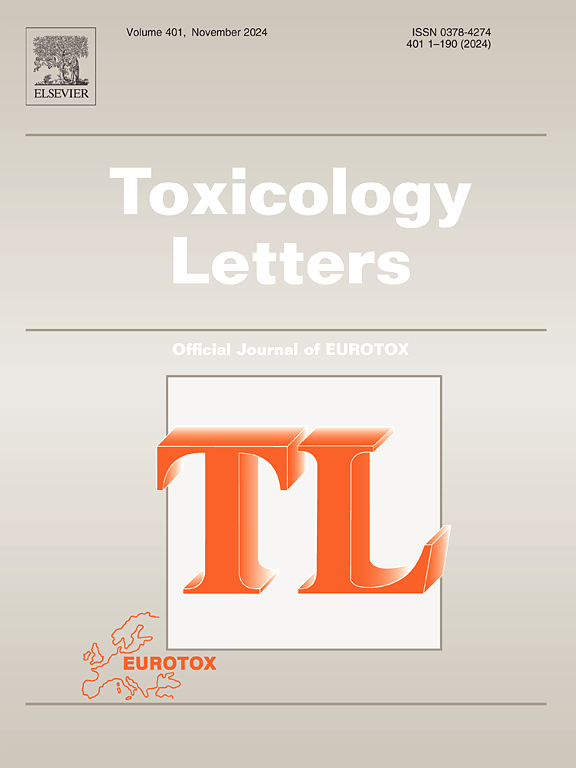The effects of occupational aluminum exposure on blood pressure and blood glucose in workers – A longitudinal study in northern China
IF 2.9
3区 医学
Q2 TOXICOLOGY
引用次数: 0
Abstract
Background
Trace element and metal exposure is closely related to the occurrence of chronic diseases, particularly affecting blood pressure and blood glucose. Current studies suggest that heavy metal exposure is a risk factor for hypertension and diabetes. Aluminum can enter the human body through daily life and occupational exposure from food, environment, drugs, and other sources, affecting the cardiovascular, endocrine, and other systems. Therefore, it is significant to observe the effect of aluminum on blood pressure and blood glucose in workers with high concentration.
Objective
In this study, electrolytic workers naturally exposed to high concentrations of aluminum were selected. The aim of the 5-year cohort study was to investigate the effects of continuous occupational aluminum exposure on blood pressure and blood glucose in workers and to assess the risk of potential cardiovascular and metabolic diseases due to heavy metal exposure.
Methods
In 2014, 183 participants from an electrolysis workshop at an aluminum plant in Shanxi were enrolled. Inductively coupled plasma mass spectrometry (ICP-MS) was performed to determine the plasma aluminum (P-Al) concentration of the workers and measured their blood pressure and glucose levels. At the 2019 follow-up, all parameters were measured again in the same workers. The relationship of the P-Al concentration with blood pressure and glucose levels was assessed using generalized linear regression, and risks of developing hypertension and hyperglycemia (diabetes or pre-diabetes) due to Al exposure were assessed using binary logistic regression. Dose-response relationships between average annual rates of change in P-Al and average annual rates of change in blood pressure and blood glucose were analyzed using RCS. The relative risk (RR) and attributable risk (AR) were also calculated.
Results
Generalized linear regression showed that the average annual rate of change in P-Al concentration was positively correlated with the annual rates of change in SBP, DBP, and blood glucose levels, with each e-fold increase in P-Al concentration increasing the annual rates of change in SBP and DBP by 3.55 % (P < 0.01) and 3.43 % (P = 0.03), respectively. Binary logistic regression showed that as the average annual rate of change in P-Al concentration (categorical variable) increased, the risk of developing hypertension increased (Ptrend < 0.05). The RCS results showed that the relationship between the average annual rate of change in P-Al and the average annual rate of change in SBP was a showed a dose-response relationship (P for overall association<0.05). RR and AR increased with increasing P-Al concentration in both hypertensive and diabetic patients.
Conclusion
Persistent occupational aluminum exposure is associated with elevated blood pressure levels in workers and increases the risk of developing hypertensive disorders.
职业性铝暴露对工人血压和血糖的影响——中国北方地区的一项纵向研究。
背景:微量元素和金属暴露与慢性病的发生密切相关,尤其影响血压和血糖。目前的研究表明,重金属暴露是高血压和糖尿病的一个危险因素。铝可通过日常生活和职业接触,从食物、环境、药物等来源进入人体,影响心血管、内分泌等系统。因此,观察铝对高浓度工人血压和血糖的影响具有重要意义。目的:本研究选择自然暴露于高浓度铝的电解工人为研究对象。这项为期5年的队列研究的目的是调查持续职业性铝暴露对工人血压和血糖的影响,并评估重金属暴露导致潜在心血管和代谢疾病的风险。方法:2014年选取山西省某铝厂电解车间183名参与者。采用电感耦合等离子体质谱法(ICP-MS)测定工人血浆铝(P-Al)浓度,并测定其血压和血糖水平。在2019年的随访中,再次测量了同一工人的所有参数。使用广义线性回归评估P-Al浓度与血压和血糖水平的关系,并使用二元logistic回归评估因Al暴露而发生高血压和高血糖(糖尿病或糖尿病前期)的风险。使用RCS分析P-Al平均年变化率与血压和血糖平均年变化率之间的剂量-反应关系。计算相对危险度(RR)和归因危险度(AR)。结果:广义线性回归显示,P- al浓度的年平均变化率与收缩压、舒张压、血糖水平的年变化率呈正相关,P- al浓度每增加e倍,收缩压、舒张压的年变化率分别增加3.55% (P < 0.01)和3.43% (P = 0.03)。二元logistic回归分析显示,随着P-Al浓度(分类变量)年平均变化率的增加,发生高血压的风险增加(p趋势< 0.05)。RCS结果显示,P- al的年平均变化率与收缩压的年平均变化率之间呈剂量-反应关系(P为总体关联)。结论:职业性铝暴露与工人血压水平升高有关,并增加高血压疾病的发生风险。
本文章由计算机程序翻译,如有差异,请以英文原文为准。
求助全文
约1分钟内获得全文
求助全文
来源期刊

Toxicology letters
医学-毒理学
CiteScore
7.10
自引率
2.90%
发文量
897
审稿时长
33 days
期刊介绍:
An international journal for the rapid publication of novel reports on a range of aspects of toxicology, especially mechanisms of toxicity.
 求助内容:
求助内容: 应助结果提醒方式:
应助结果提醒方式:


